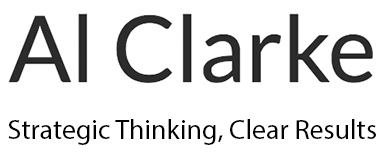Social Media is not good news for radio advertising revenue is it?
Well, I think it is. But only if someone gets a grip. And quickly. That’s the subject of a Radio Festival debate next Tuesday in Manchester and I’ll be making the case for social media loud and clear (See the programme details here http://bit.ly/byPvCC ).
‘The pictures are better on radio’ an old slogan we used in the ‘90s when I worked in commercial radio but still valid today – and it can be true, literally, if broadcasters join the new world of social media.
The explosion of entertainment choices provided by the internet and mobile technology means people can do what they want when they want. And they’re fickle. No need to wait for the end of the tune to catch the name of the artist, your iPhone will work it out – or you can read it on the website. Something else catches your ear or your eye and maybe you want to go to the artist’s website, or perhaps follow them on Twitter? Or become a Facebook fan. Or if you’re waiting for the news bulletin – just try Google instead.
No longer do you need to hang off every word of the presenter’s carefully crafted links – or more to the point, to listen to the ads that pay the bills in between the tunes and the news.
I firmly believe that the basics of social media – people in dialogue with other people using electronic media – is just what radio’s all about too. And you can use the loyalty that people feel for the station and presenters to engage with sponsors and advertisers.
How? One of the stations I worked at in Stoke on Trent (now called Signal 1) has a Facebook page with 5000 fans. As of today (15 October 2010) the last update appears to be a week ago. Some stimulating content, links to interest groups and events would keep engagement going. But it needs focus and resource. Images and interviews – all available – could keep people on the site and talking about it.
Signal 1’s Twitter feed has 354 followers. One of their key advertisers (Arnold Clark, a car dealer) has 530 Twitter followers! Really? A car dealer has more followers than this great radio station? However, Chris Evans has 134,000 Twitter followers, Chris Moyles has 227,000 fans (and what happens to Radio 1’s influence on Twitter if he moves away from the station…) and Tony Blackburn has nearly 9,000 Twitter followers.
So what?
1/3 of 18-34 year old women check their Facebook account BEFORE they use the bathroom in the morning. They’re clearly not listening to your station first of all, but you might be able to engage with them via Facebook. And then get them listening, and engaging with your sponsors if there’s enough interesting content.
It took 38 years for Radio to achieve its first 50 million listeners. Facebook found 200 million in 9 months.
Come on guys – get with the programme… join the debate at http://bit.ly/radioandsmblog
About Al Clarke – I am a marketing and communications specialist who has worked in the motor industry at board level since 1997. I have held senior positions in global brands such as Ferrari and the BBC including a decade working as a journalist.I am a member of the Institute of Directors, the Public Relations Consultants Association, an expert member of the digital community Smart Insights and Life President of the Motor Industry Public Affairs Association.I speak regularly in the field of marketing communications to businesses and the media with particular reference to digital media. Find me on Twitter @alclarkeltd and LinkedIn.
